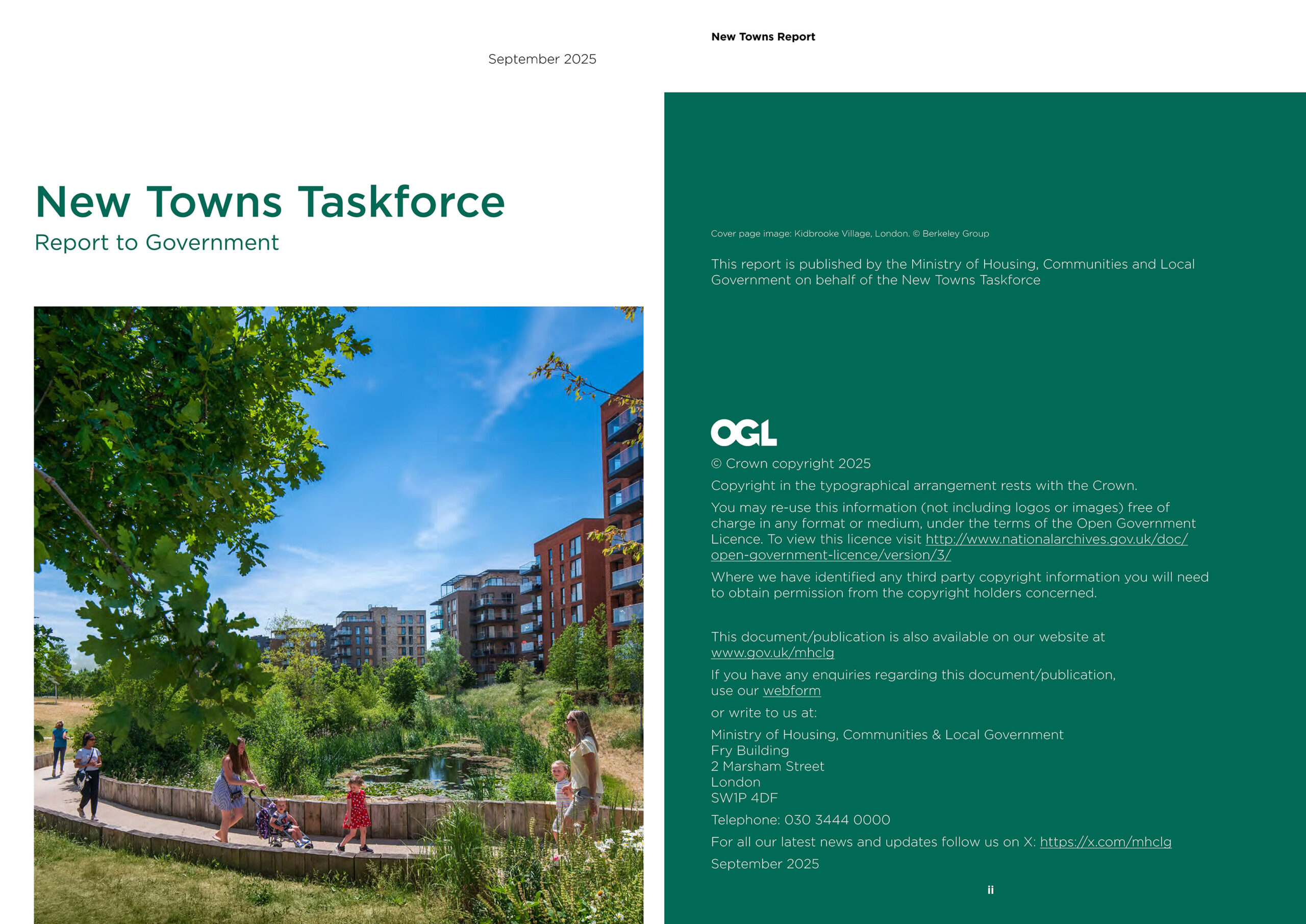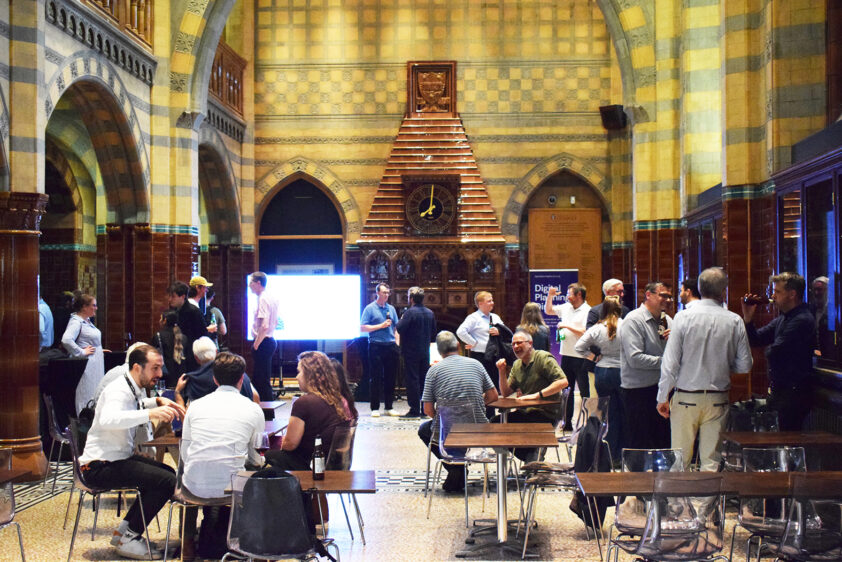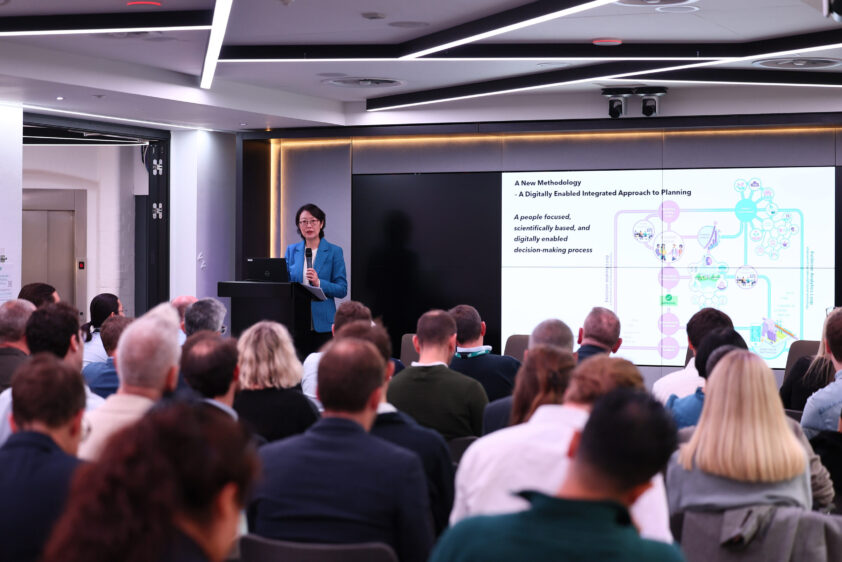
Digital Task Force for Planning Welcomes Visionary New Towns Taskforce Report
The Digital Task Force for Planning warmly welcomes the New Towns Taskforce report and its recommendation to harness digital innovation in building resilient, inclusive, and sustainable communities—establishing a national model for modernised planning.
Digital Task Force for Planning Welcomes Visionary New Towns Taskforce Report
The Digital Task Force for Planning has warmly welcomed the publication of the New Towns Taskforce report, which was launched today alongside the Government’s initial response. Marking a pivotal moment after more than half a century without a new town designation, the report recommends 12 new towns and urban extensions across England, collectively capable of delivering at least 300,000 new homes.
The report makes a compelling case for new towns as a strategic response to the nation’s housing crisis, while also aiming to boost productivity and create thriving, sustainable communities. Among the recommended locations are Adlington (Cheshire East), Tempsford (Central Bedfordshire), South Gloucestershire, Thamesmead, and Worcestershire Parkway, reflecting a diverse spread of opportunities from greenfield sites to urban extensions.
Crucially, the New Towns Taskforce has set out a vision for how these new communities should be planned and delivered, guided by ten placemaking principles. These include vision-led development, ambitious density targets, prioritising affordable and social housing, robust social infrastructure, integrated transport, sustainability, stewardship, and more. The message is clear: new towns are not simply housing developments, but the foundation for entire communities, incorporating employment opportunities, schools, green spaces, excellent connectivity, and climate resilience from inception.
The Digital Task Force for Planning applauds the report’s strong emphasis on digital innovation and integrated planning. Two recommendations directly highlight the role of digital transformation in planning new towns:
- Strategic Planning (Recommendation 2) : The report calls for national reform, recommending that the Government update its infrastructure and planning processes to underpin future waves of new towns. This includes the rollout of statutory Regional Spatial Development Strategies, and the use of spatial data and national coordination tools to support evidence-based decision-making and infrastructure investment.
- Innovation in Planning (Recommendation 35) : The Taskforce urges delivery bodies to work with government and industry to adopt digitally-enabled integrated approaches to planning. The increasing digitalisation of the planning system, from the use of data platforms to advanced planning tools, is expected to streamline decisions, enhance transparency, and foster meaningful community engagement.
Dr Wei Yang OBE, CEO of the Digital Task Force for Planning and a member of the New Towns Taskforce, played a key role in placing digital innovation at the heart of the new towns vision. “Digital innovation is fundamental,” said Dr Yang. “From harnessing spatial data to identify strategic opportunities, to deploying state-of-the-art tools that make planning more agile and inclusive, new towns can set a new standard for digital transformation in spatial planning.”
“The vision for the next generation of new towns is to create resilient, inclusive, affordable, and sustainable communities where people and nature thrive in harmony. Embedding the highest standards of design, sustainability, and well-being is essential to ensuring these places are built not only for today, but for generations to come.”
“The next generation of new towns can also provide a blueprint for a brighter future, shaping how we plan, finance, build, and steward sustainable communities at scale through a holistic approach enabled by the latest digital and technological innovations.”
By embedding digital approaches from the outset, the delivery of new towns promises not only to create better places for people and the environment, but also to serve as a national model for modernising the planning system. The Taskforce believes that the lessons learned and innovations demonstrated can be adopted more widely by Local Planning Authorities and Strategic Authorities, strengthening planning across the country.
The Digital Task Force for Planning looks forward to working closely with government, industry partners, local leaders, and communities to make this vision a reality. The adoption of digitally-enabled integrated planning will be instrumental in delivering the next generation of new towns, places where people can truly thrive for decades to come.


